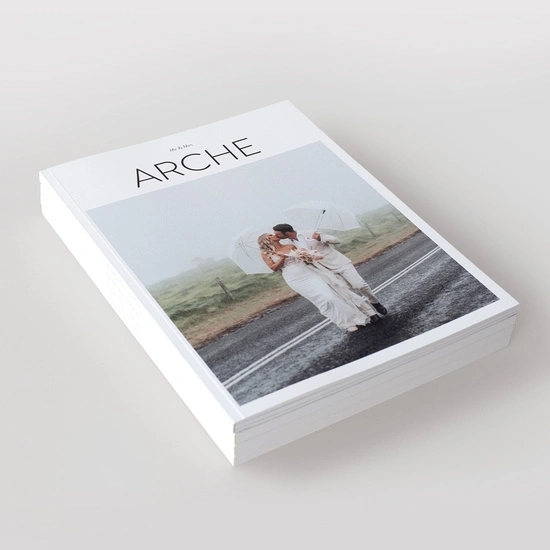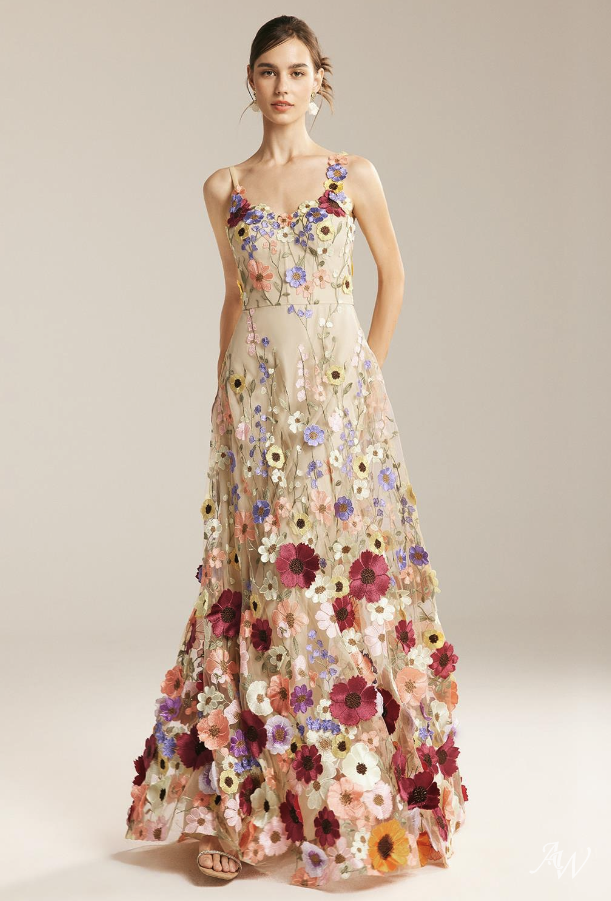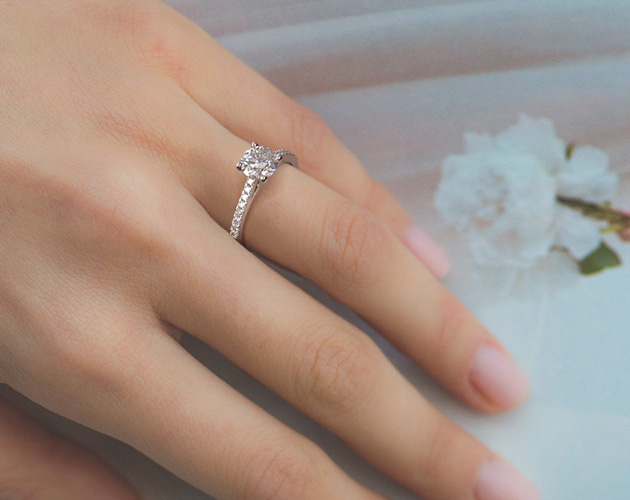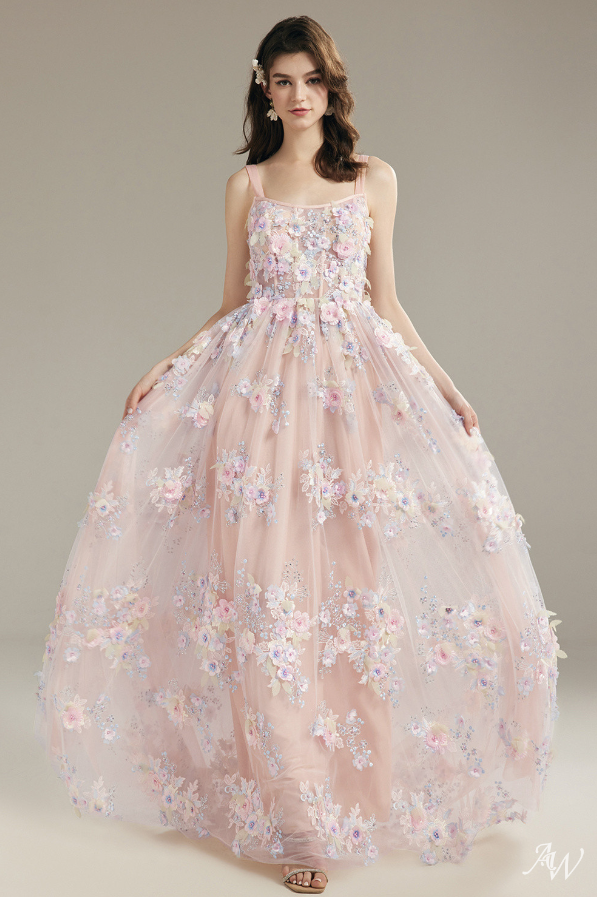15 million girls will become child brides this year – married by their 18th birthdays.
For most of the brides who read this blog, getting married is an exciting and busy time, planning your best day ever, and imagining your life ahead with your other half.
But for millions of girls and women around the world, their wedding day isn't a happy one – instead it marks their childhoods being taken away.
© UNICEF/UN05222/Dragaj
15-year-old Afaid Maiga, a Malian refugee, and former child bride living in Mauritania.
If you saw our child wedding post this morning, you were undoubtedly shocked. A sweet, innocent girl, who could be your sister, your daughter, your best friend, or yourself, forced into a marriage that's dangerous, destructive, and disturbing, with an older, often unknown, man.
But just because this might not be happening to your sister, your daughter, or your best friend, doesn't mean it's not happening.
More than 700 million women alive today were married as children.
More than 700 million women alive today were married as children. More than one in three (some 250 million) were married before their 15th birthdays.
And this isn't just happening in one or two small parts of the world, it's happening in countries across Asia, Africa and the Middle East.
© UNICEF/UNI112030/Slezic
Madhalsi Sarkar, 17, from India, contacted the Child Helpline when her parents tried to marry her to a 27-year-old man.
Child brides are at risk of rape, violence, abuse and exploitation. A girl who is married as a child is more likely to be out of school, experience domestic violence and become infected with HIV/AIDS.
She is more likely to have children when she is still a child herself, and is far more likely to die due to complications during pregnancy and childbirth.
Child marriage must end.
The issue of child marriage has gained traction in the mainstream media over the past few weeks with staged social experiments posted on Youtube featuring older men posing with young model brides (in Lebanon & the USA). We’re so thrilled that people are taking notice of this important issue, and we’d like to take the conversation further by shining a light on the real child brides across the world.
So today, on International Women's Day, and to mark the launch of UNICEF and UNFPA's first ever joint Global Program to Accelerate Action Against Child Marriage, we wanted to share some of the real life stories, of real girls who became child brides.
If you're a bride or groom reading this, and planning a wedding of your own, choosing your dress or suit, selecting your flowers, and playing with your seating plan, try to keep in mind the millions of child brides in countries around the world – girls who'd rather be choosing their favourite colours, selecting their subjects in school, and playing with their friends…
Bangladesh: Rina Begum's Story
© UNICEF/UNI77809/Sheba
Rina Begum, 14, stands outside her parents’ home, in the northern district of Jamalpur in Dhaka, Bangladesh.
Rima, whose education was cut short at Grade 6, was taken out of school to marry.
Her husband beats her and has sent her back to her parents. He hopes to secure additional dowry.
Mozambique: Lúcia's Story
© UNICEF Mozambique/2015/Alex Marques
Lúcia, 15 who is 8 months pregnant and Velasco, 20.
In Mozambique, 48 per cent of girls are married before the age of 18. This has major consequences including many girls having to drop out of school and face greater risks during pregnancy and childbirth.
“I wasn't sure in the beginning if I wanted this. In the end it wasn't my decision; everyone convinced me. The family decided this was best,” said Lúcia, 15.
In the end it wasn't my decision.
Shortly after Lúcia’s marriage she became pregnant and 8 months into her pregnancy, she contracted malaria and was forced to stop going to school. “I was very, very ill,” explains Lúcia. “The teacher asked me to stay home as I was sick during class.”
Traditionally in Mozambique, a “lobolo” (a form of dowry) is paid by the girl's family when she gets married. Lúcia tells us her lobolo is due to be paid next January.
Lúcia hopes to return to school after the birth of her baby, with the support of her parents. She would love to be a teacher. However, the family is unsure how she will be able to continue her schooling when the baby arrives.
The Government Director in Inhambane City, Mozambique explains, “Many families are unaware that when a girl marries young, she is not prepared to be a mother. Often there are issues with her pregnancy, she stops school, and this creates a cycle of illiteracy.”
Iraq: Dilda's Story
© UNICEF/UNI155452/Noorani
Dilda, 17, stands at the door to the rented home she shares with her new husband, 23-year-old Razan, in the city of Sulimaniyah, in Kurdistan Region.
“I never imagined my wedding day; I was completely devoted to study,” says Dilda. “I wanted to become a doctor. I was very good in school.”
Dilda’s marriage was an economic necessity for her parents. The family once lived comfortably in Syria, but were forced to flee their homes due to the ongoing conflict. They now are living as refugees in Iraq and struggle to get by with even the basics.
Democratic Republic of the Congo: Florence's Story
© UNICEF/UNI199292/Dubourthoumieu
Florence, a 14-year-old student at the Hope Secondary School, in Kinshasa, the capital city of the Democratic Republic of the Congo.
“My step-mother wanted to marry me off to a man when I was 13. I refused since I was still a little girl and I wanted to study. So she took me to the market and abandoned me there.
I didn’t come back, it was a good decision.
Now, I’m currently in the last year of primary school continuing with my studies. I want to go to high school and then become a tradeswoman”.
Kenya: Amina's Story
© UNICEF/UNI114734/Gangale
14-year-old Amina Hassan* stands in an area for new arrivals in the Ifo refugee camp near the Kenya-Somalia border.
She is seven months pregnant and arrived in the camp with her mother-in-law and other relatives. They are waiting to register for food and other aid.
Amina and her family walked for 26 days from their hometown of Dinsor in South-East Somalia, braving lions and hyenas and surviving on food they received from strangers.
Amina has never attended school and was married off by her parents at age 12. Her husband is still in Somalia, searching for work.
*Amina's name has been changed.
Afghanistan: Zaika's Story
©UNICEF/Kate Brooks
Zakia, 16, stands in a shelter for girls and women in Kabul, Afghanistan.
She escaped a forced marriage to a 25-year-old man in Iran. The shelter works to resolve family problems, so girls and women can go back to their communities, but many challenges remain.
Niger: Nafissa's Story
Photo by Marieke Van Der Velden
Nafissa was married when she was 16. She has been married for 10 months, becoming pregnant three months after marrying.
Nafissa's baby was stillborn.
Uganda: Katushabe Choice's Story
© UNICEF/UNI87065/Noorani
Katushabe Choice (20 years old) stands outside her house where she lives with her three children ages 6, 3 and 1, in Busoru I village, a former camp for Internally Displaced People in Bundibugyo, near the Congo border in Western Uganda.
She got married and delivered her first child when she was only 13 years old.
Her husband works as a labourer in other people's farms. When not busy caring for her children, she goes to help her husband in the field.
© UNICEF/UNI198617/Aggio Caldon
13-year-old Waad's father forced her to marry a man she did not know.
Wives and mothers, who are also children.
These are just a tiny sample of the millions of harrowing stories from girls who have both experienced, or are at risk of, child marriage.
UNICEF works in countries around the world to end this dangerous practice.
Today UNICEF and UNFPA announced the first-ever global initiative to eliminate child marriage – aimed at protecting millions of girls from losing their childhoods.
Image via UNICEF
By working with families, communities, governments and young people themselves – UNICEF and UNFPA, will focus on preventing child marriage and helping girls who have already been wed.
The program will reach six million vulnerable girls from 12 countries in Africa, Asia and the Middle East in its first four years.
And there is other good news among all the bleak stories.
UNICEF estimates that if we can speed up the current rate of decline of child marriage, there will be 130 million less women and girls married as children by 2030, and 250 million less women and girls married by 2050.
When girls are allowed to be girls, everybody wins – UNICEF
By identifying communities and individuals at risk, educating families and empowering girls, UNICEF's fight against child marriage is making progress.
But, more needs to be done.
© UNICEF Mozambique/2015/Alex Marques
“I want to work in business,” Sónia, 16, Mozambique who had to leave school and move in with her husband's family.
Of the world’s 1.1 billion girls, 22 million are already married, and hundreds of millions more are at risk.
Help us, help UNICEF to #endchildmarriage today, by sharing this post, our video, and our child bride wedding.
Weddings should be happy occasions, marriage should be a choice, and child marriage should not be happening in 2016.
Visit UNICEF for more information on how you can help #endchildmarriage








































